The Evolution of the Modern Era Rolex Daytona
By: John B. Holbrook, II
April 20th, 2008
Even though the modern era Daytona (which I define as those which have the 4130 movement inside) has only been with us since 2000, many do not realize that the Daytona has several different variations for which Daytona collectors should be aware. I call the first variation of the modern Daytona the "Mark I." From the year 2000 introduction, up through the mid-F series production (around 2003) the Mark I version was produced,. A change to the hands of the Daytona (see my article on "What is a Fat Hands Daytona?") ushered in the Mark II modern Daytona - this single cosmetic change is the only differentiator between the Mark I and Mark II. Which brings us to the Mark III, and a bit of controversy surrounding the new "Parachrom Bleu" hairspring with regard to the modern Daytona.
We know that the Daytona was the very first watch in the Rolex catalogue to receive the Parachrom Bleu hairspring , (as is documented in Rolex's own PERPETUAL SPIRIT magazine, Number 13, P.38). If you're not familiar with the new hairspring, James Dowling wrote an excellent article on the subject - just click HERE. The point of controversy was identifying exactly when the Parachrom Bleu hairspring found its way into the caliber 4130 in the Daytona. James Dowling posted on Timezone that, during a Q&A session with Rolex he was told that the Parachrom Bleu hairspring had been secretly introduced and in use by Rolex for several years, and was present in all 4130 equipped Daytona watches. However, this information initially appeared to be inaccurate. Here's a photo of the caliber 4130 inside my latest 116520 white dial Daytona:
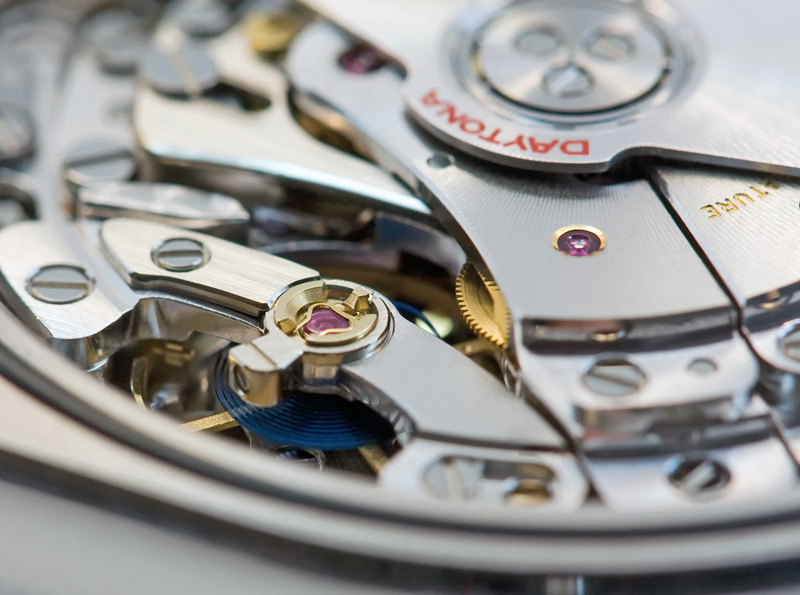
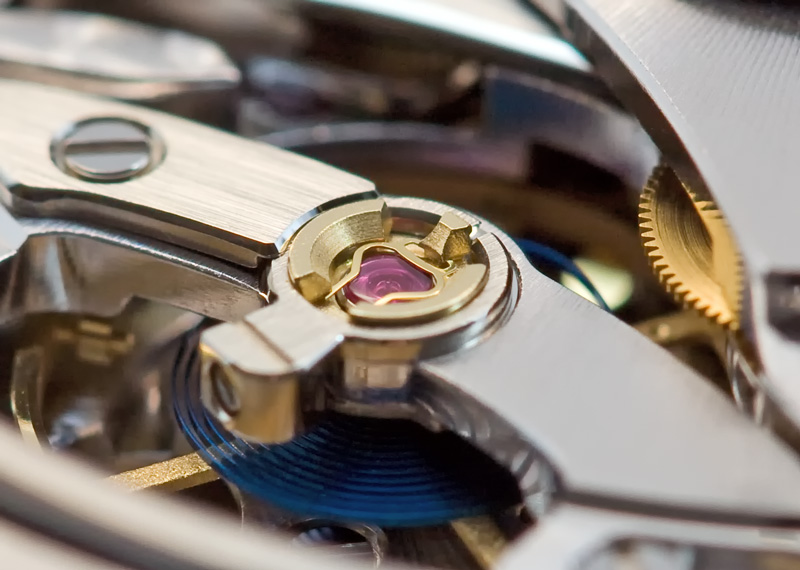
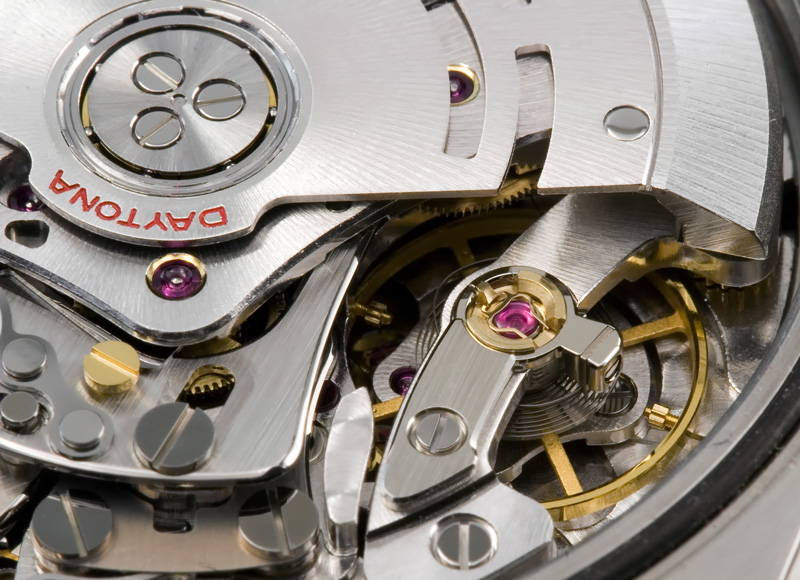
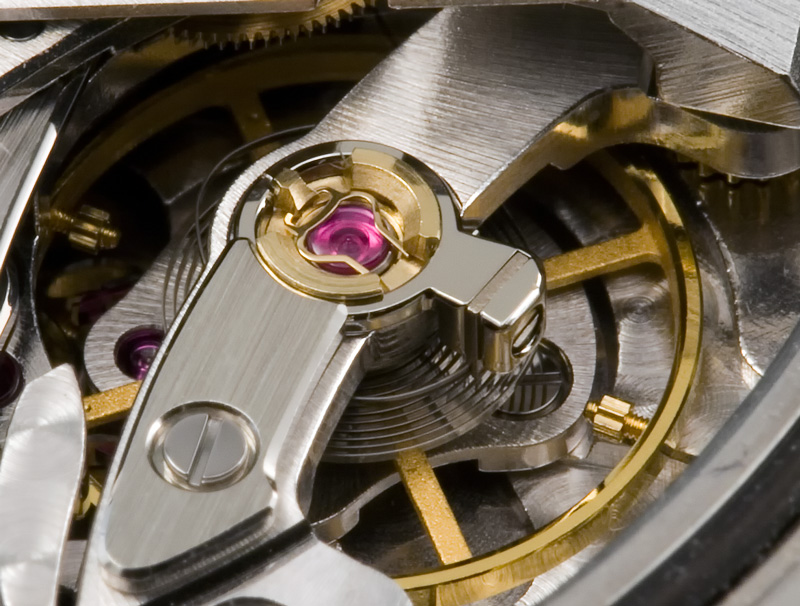
In the second set of photos, clearly the hairspring does not have the characteristic blue color of the Parachrom Bleu hairspring. So what is it? To answer this question, I spent several hours speaking to everyone I could from Rolex USA, to Rolex service technicians working for authorized dealers, and I still couldn't get a straight answer. Then, someone sent to me the below pictured internal Rolex two page document (they asked to remain anonymous) which answers the question. Note that I have underlined key points in the document in red:


The document confirms that the Parachrom hairspring has indeed been incorporated into the 4130 since the beginning in 2000, but also points to the fact that for the first five years, the Parachrom hairspring wasn't blue in color. It wasn't until 2005 that the Parachrom Bleu version of the hairspring was introduced, with the patented oxide coating, which improved certain rate stability issues in the original Parachrom hairspring. Based on the fact that Rolex kept the fact that they were introducing the Parachrom hairspring on the 4130 a virtual secret, and did not implement the new hairspring on any other model between 200-2005, my theory is that Rolex used the early 4130 Daytonas as a sort of "beta test" of the new hairspring. This gave them several years to observe the hairspring "in production" identify any flaws and correct them. Which is why Rolex only officially acknowledged the existence of the Parachrom hairspring after 2005, once the new oxide coating and blue color. This would also suggest a possible explanation why Rolex has been somewhat evasive with acknowledging the Parachrom in the early 4130 Daytonas - customers who bought these models between 2000 and 2005 with the non-blue Parachrom hairspring might not be pleased if they thought they purchased a less than perfect, "beta test" model. My theory then is that Rolex added the Parachrom Bleu hairspring on the Daytona at approximately the same time they added the "RolexRolexRolex" engraving on the rehaut (inner bezel ring). I can prove the rehaut engraving happened mid-Z series production. Here's a photo of an early Z production black dial Daytona which I owned:
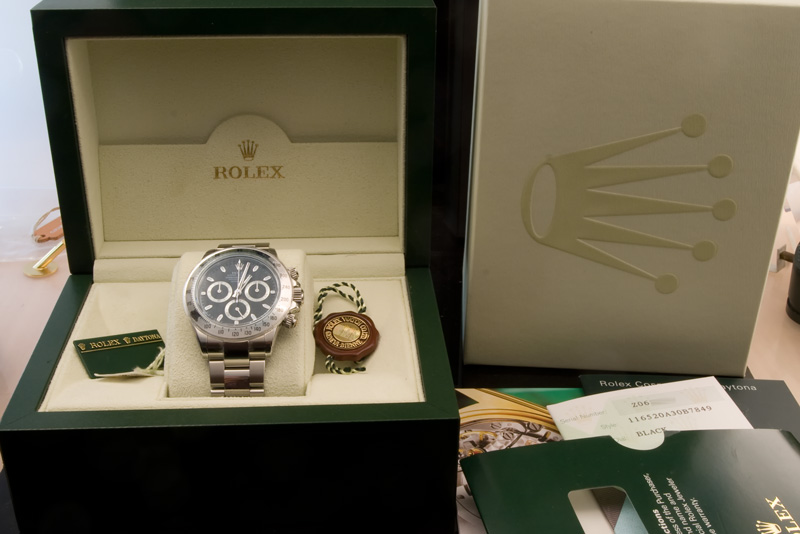
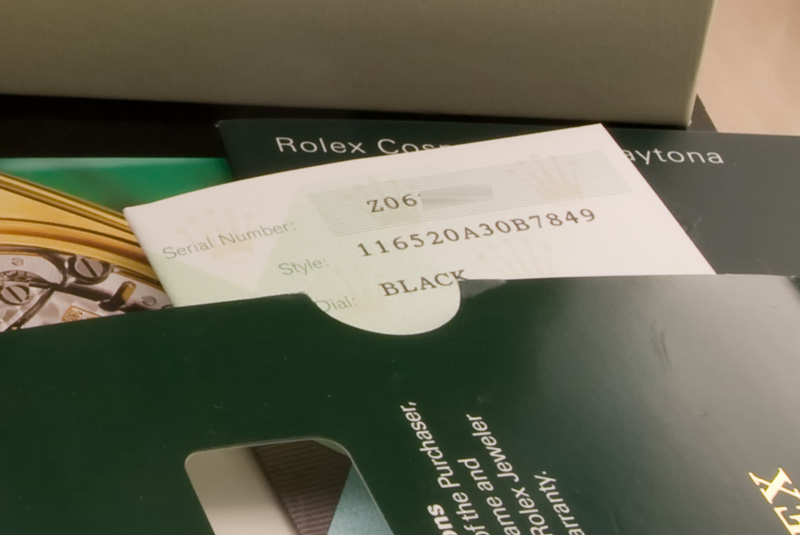
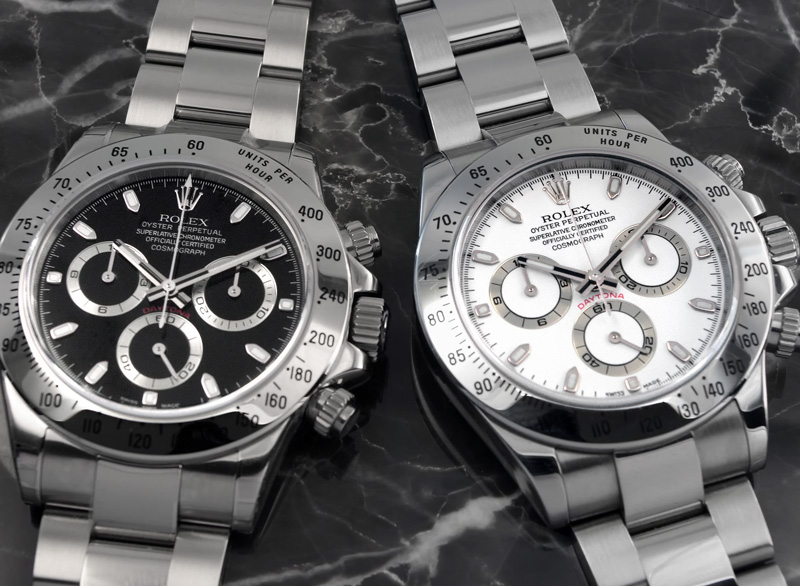
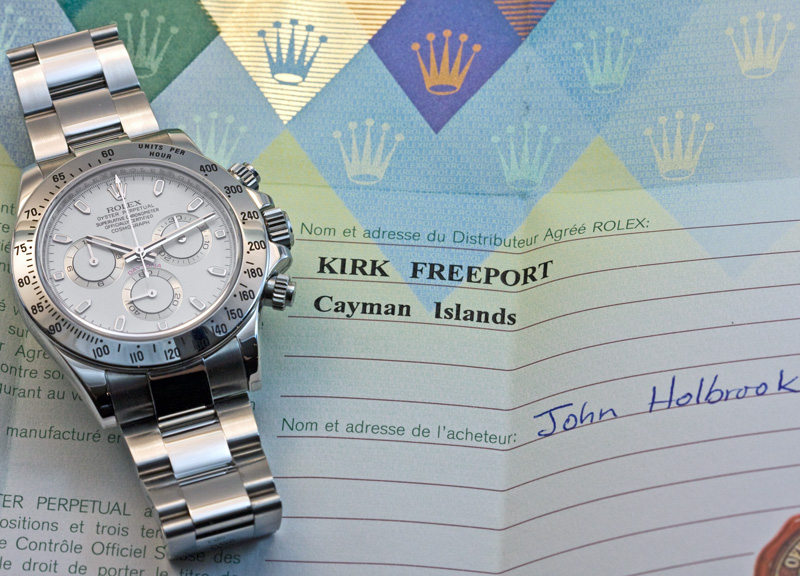
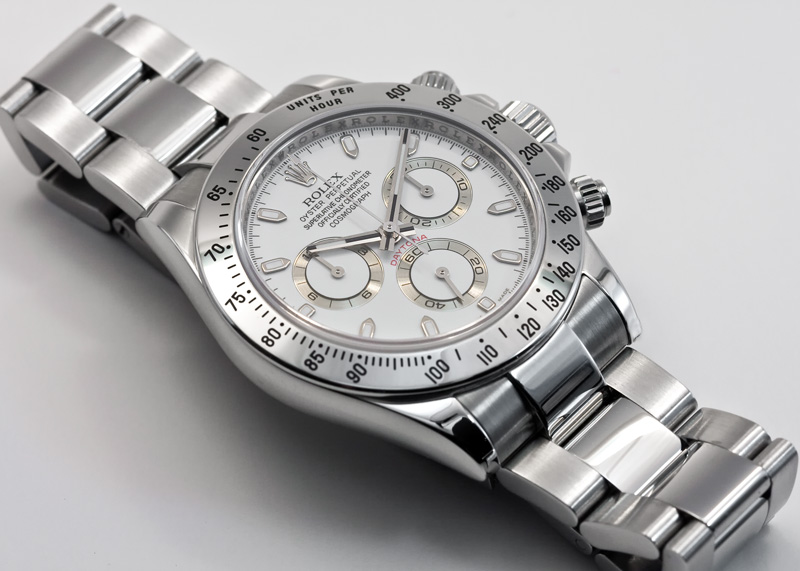
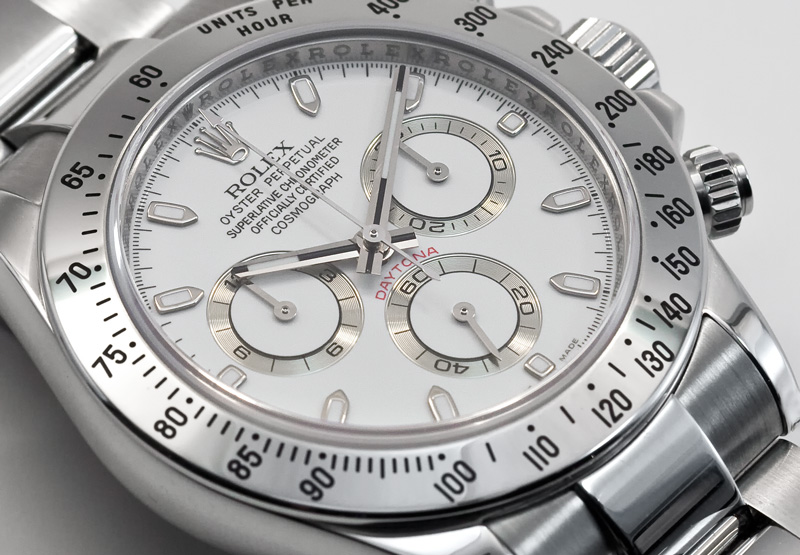
So while I can't as of this writing conclusively prove that that the Parachrom Bleu hairspring was introduced no earlier than the late Z serial production, it does seem a safe bet that if you wnat to buy a Daytona with the new hairspring, just look for the "RolexRolexRolex" engraving. As long as the engraving is there, you should have a model with the new Parachrom Bleu hairspring. If anyone reading this article can provide any photo evidence of the Parachrom Bleu hairspring on an earlier than Z series production model Daytona, please contact me at john@rolexreferencepage.com.
4/22/08 UPDATE: since completing this article, an eagle-eyed "Martini" from the German Rolex Forum (www.r-l-x.com) spotted some dial variations which I previously missed, so I'll have to do some re-classifying. Take a look at this shot comparing the Mark I & II dial side by side - there's no difference in the minute markers on these two dials:
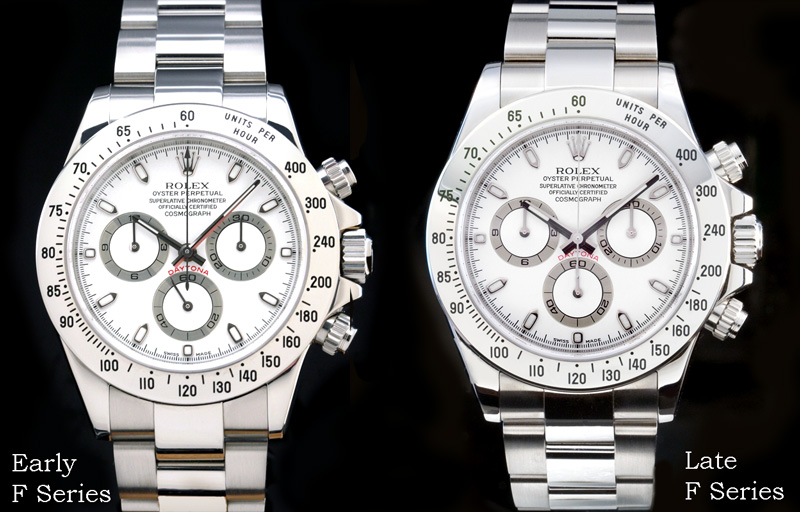
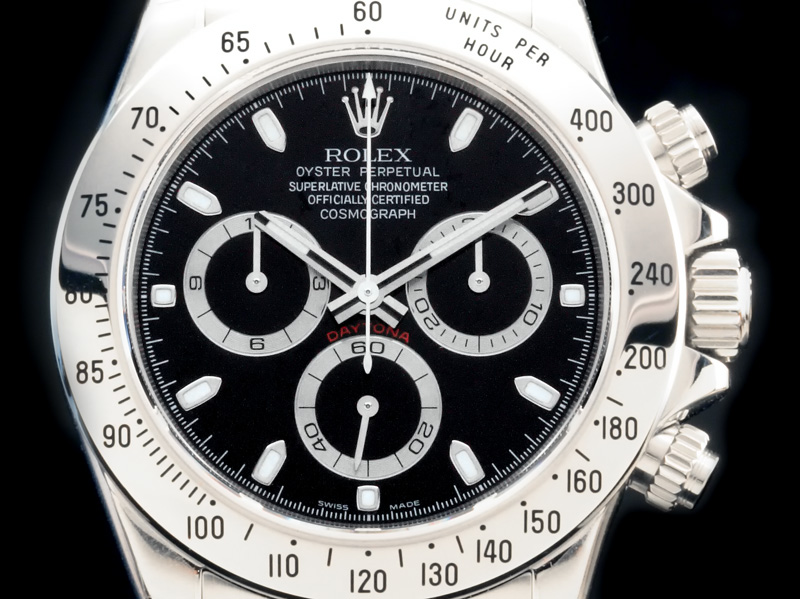
Mark I Daytona: all models from the introduction of the modern Daytona up to the introduction of the "fat hands" dial which happened mid-way through F serial production
Mark II Daytona: Fat hands models - the only distinguishing difference between a Mark I and Mark II.
Mark III Daytona: Models with the minute marker variation (absent are the enlarged 27 minute marker and 33 minute marker as is found on Mark I and II dials). As of this writing, I'm uncertain when the Mark III dial was introduced, though doing some photo research on eBay and Google photo revealed photos of several D series models with the Mark III dial. My guess/theory is that the Mark II dial only lasted from half way through the F series production, into half way through the D serial. Meaning, a Mark II Daytona may be the rarest example found in modern Daytona production.
Mark IV Daytona: Has the rehaut engraving and, presumably, the Parachrom Bleu hairspring.
I look forward to gathering more information about the Mark I, II, III and IV Daytonas in the coming weeks and months - check back often!